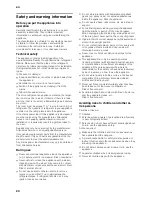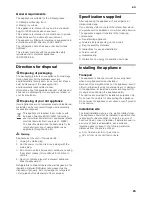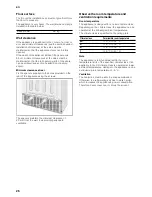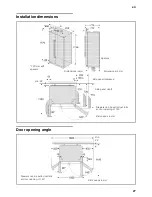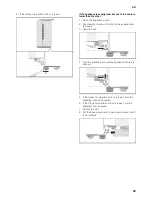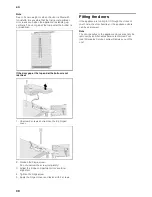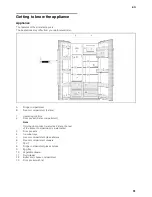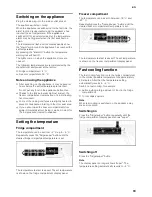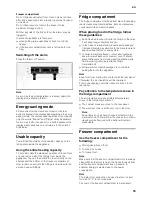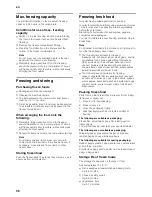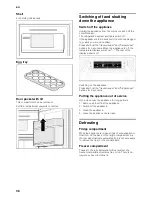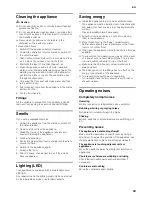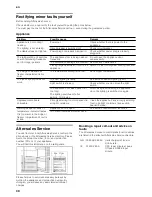
en
28
Connecting the appliance
After setting up the appliance, wait for at least 1 hour
before starting the appliance up. The oil contained in
the compressor may have been displaced into the
refrigeration system during transport.
Before starting the appliance up for the first time, clean
its interior (see the section headed Cleaning the
appliance).
Do not remove the transit locks from the shelves and
trays until the appliance has been installed.
Electrical connection
The socket must be near to the appliance and easily
accessible after the appliance has been installed.
The appliance conforms to protection class I. Connect
the appliance to a 220-240 V/50 Hz alternating current
supply using a socket with protective earthing
conductor which has been correctly installed. The
socket must be protected by a fuse with a rating of
10 A to 16 A.
In the case of appliances operated outside of Europe,
check whether the voltage and type of current specified
conform to the values of your electricity grid. You will
find this information on the rating plate.
m
Warning
The appliance must never be connected up to an
electronic energy-saving socket.
Sinusoidal-commutated and line-commutated inverters
can be used with our appliances. Line-commutated
inverters are used with photovoltaic systems that are
connected directly to the national grid. Sinusoidal-
communicated inverters must be used with standalone
applications (e.g. on ships or mountain huts) that do
not have a direct connection to the national grid.
Levelling the appliance
Note
To ensure that it functions properly, the appliance must
be set level using a spirit level.
If the appliance is not level, it could prevent the doors
from closing properly.
1. Move the appliance into its intended installation
position.
2. So that the appliance cannot move, unscrew the two
front feet until they are standing firmly on the floor.
3. Screw the feet in/out until the appliance is exactly
level. Use the appliance doors as a reference point.
4. If the freezer compartment door is lower:


